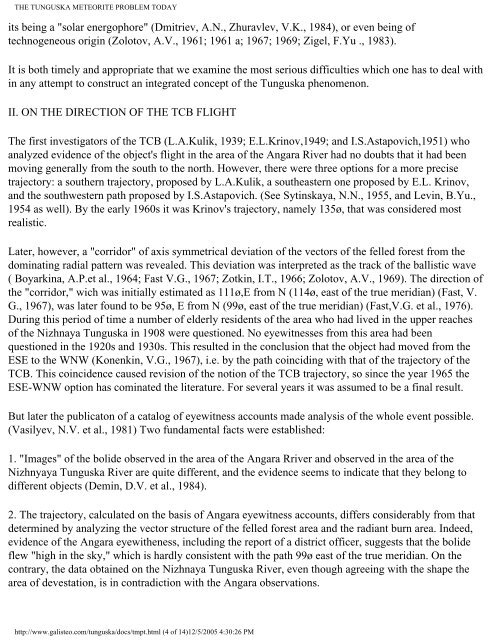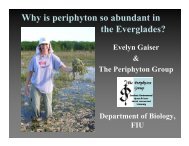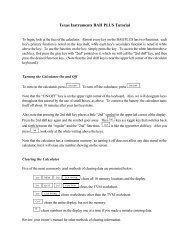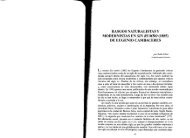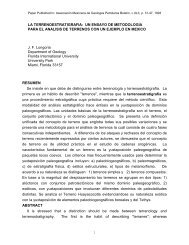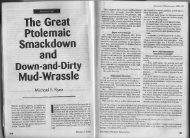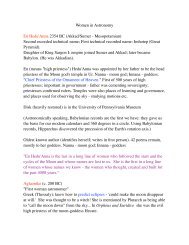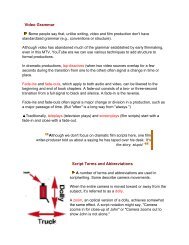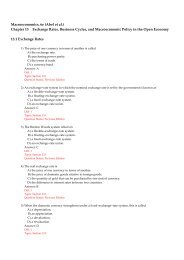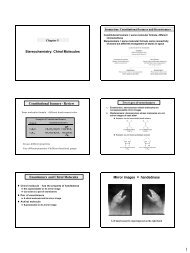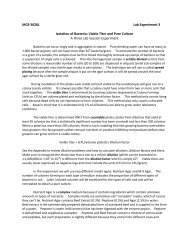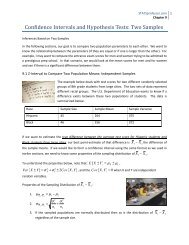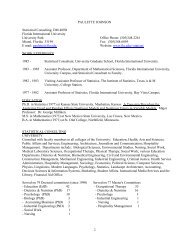THE TUNGUSKA METEORITE PROBLEM TODAY post-war field work under supervision of Florensky, Plekhanov, Zolotov and Vassilyev, found any explosion or impact astroblems (??) or large fragments of the TCB (Florenskiy, K.P.et al.,1960; Plekhanov, G.F., 1963; L'vov, Yu.A. et al.,1963; 1963 a ). Search for finely-dispersed cosmic matter in the soils and peat of the catastrophe area, over 10, 000 km2 (Kirova, O.A., 1961; Florensky, K.P., 1963; Florensky, K.P., Ivanov, A.V. et al., 1968; Glass, B.P., 1969; 1976; Vasilyev, N.V. et al., 1971; 1973; 1974; 1974 a; 1983; Vypadenie ... 1975; Boyarkina, A.P. et al., 1976; 1976 a , Alexeeva, K.N. et al., 1977; Kvasnitsa V.N. et al., 1979; Sobotovich, E.V. et al., 1980; 1983; Zbic, M., 1984; Doroshin I.K., 1988) did not result in discovery of material that could be reliably differentiated from fluctuations of the bacrground fall of extraterrestrial matter. However, biogeochemical element and isotopic anomalies that may be related to the event have been discovered in the area of the catastrophe (Kovalevsky, A.F. et al., 1963; Alexeeva K.N. et al., 1976; Zhuravlev, V.K et al., 1976; Golenetsky, S.P. et al., 1977; 1977 a; 1980; 1981; 1983; Kolesnikov, Kolesnikov, E.M., 1984; 1989; Kolesnikov, E.M. et al., 1979; Zhuravlev, V.K. et al., 1976). Increased quantities of microparticles enriched by Cu, Au, Zn and certain other elements in the resin of the trees in the epicenter area that survived the 1908 catastrophe are very likely related to the Tunguska event. (Longo, G. et al., 1994). The post-war expeditions revealed a complex range of ecological consequences of the Tunguska explosion, namely: 1) accelerated growth of new (post-catastrophe) trees and trees that survived the event (Nekrasov, V.I.; Emelyanov, Yu. M., 1964; Beregnoi, V.G., Drapkina, G.I., 1964; Shapovalova, R. D. et al., 1967; Emelyanov, Yu.M., Lukyanov, V.B. et al., 1967; Vasilyev, N.V. et al., 1976; 1980); 2) population-genetic effects, mainly at the epicenter area and along the TCB trajectory (Dragavtsev, V.A. et al.,1975). This is a general outline of the Tunguska phenomenon which, proves to be different in principal from other impact phenomena. The many hypotheses that have been put forward in an attempt to explain the Tunguska event can be arranged in two groups. One includes those hypotheses that are based on the concept of conversion of the kinetic energy of the TCB into shock wave energy. The other group consists of hypotheses that emphasize a release of the internal energy of the body, whether chemical or nuclear. The first group of hypotheses involves the concept of an asteroidal nature of the TCB (Kulik, L.A., 1933; 1939; 1939; Krinov E.L.,1949; Astapovich, I.S., 1933; Anfinogenov, D.F., 1966; Sekanina, Z; 1983; Chyba, C.F., 1993, Longo G. et al., 1994;), or a cometary nature (Astapovich, I.S., 1933; Whipple, F.I.W., 1934; Fessenkov, V.G., 1961; 1978; Grigoryan, S.S., 1976; 1979; Korobeynikov, V.P. et al., 1976; 1980) . These can be classified as hypotheses based on the classical concepts of the minor bodies of the Solar System. These latter hypotheses assume a special nature of the TCB, one different from asteroids or comets. These include the hypotheses of an antimatter nature of the TCB (La Paz, L., 1948; Cowen, C. et al., 1965); of the Tunguska object being a miniature black hole (Jackson, IV A.A., Ryan, M.P.,1973), or of http://www.galisteo.com/tunguska/docs/tmpt.html (3 of 14)12/5/2005 4:30:26 PM
THE TUNGUSKA METEORITE PROBLEM TODAY its being a "solar energophore" (Dmitriev, A.N., Zhuravlev, V.K., 1984), or even being of technogeneous origin (Zolotov, A.V., 1961; 1961 a; 1967; 1969; Zigel, F.Yu ., 1983). It is both timely and appropriate that we examine the most serious difficulties which one has to deal with in any attempt to construct an integrated concept of the Tunguska phenomenon. II. ON THE DIRECTION OF THE TCB FLIGHT The first investigators of the TCB (L.A.Kulik, 1939; E.L.Krinov,1949; and I.S.Astapovich,1951) who analyzed evidence of the object's flight in the area of the Angara River had no doubts that it had been moving generally from the south to the north. However, there were three options for a more precise trajectory: a southern trajectory, proposed by L.A.Kulik, a southeastern one proposed by E.L. Krinov, and the southwestern path proposed by I.S.Astapovich. (See Sytinskaya, N.N., 1955, and Levin, B.Yu., 1954 as well). By the early 1960s it was Krinov's trajectory, namely 135ø, that was considered most realistic. Later, however, a "corridor" of axis symmetrical deviation of the vectors of the felled forest from the dominating radial pattern was revealed. This deviation was interpreted as the track of the ballistic wave ( Boyarkina, A.P.et al., 1964; Fast V.G., 1967; Zotkin, I.T., 1966; Zolotov, A.V., 1969). The direction of the "corridor," wich was initially estimated as 111ø,E from N (114ø, east of the true meridian) (Fast, V. G., 1967), was later found to be 95ø, E from N (99ø, east of the true meridian) (Fast,V.G. et al., 1976). During this period of time a number of elderly residents of the area who had lived in the upper reaches of the Nizhnaya Tunguska in 1908 were questioned. No eyewitnesses from this area had been questioned in the 1920s and 1930s. This resulted in the conclusion that the object had moved from the ESE to the WNW (Konenkin, V.G., 1967), i.e. by the path coinciding with that of the trajectory of the TCB. This coincidence caused revision of the notion of the TCB trajectory, so since the year 1965 the ESE-WNW option has cominated the literature. For several years it was assumed to be a final result. But later the publicaton of a catalog of eyewitness accounts made analysis of the whole event possible. (Vasilyev, N.V. et al., 1981) Two fundamental facts were established: 1. "Images" of the bolide observed in the area of the Angara Rriver and observed in the area of the Nizhnyaya Tunguska River are quite different, and the evidence seems to indicate that they belong to different objects (Demin, D.V. et al., 1984). 2. The trajectory, calculated on the basis of Angara eyewitness accounts, differs considerably from that determined by analyzing the vector structure of the felled forest area and the radiant burn area. Indeed, evidence of the Angara eyewitheness, including the report of a district officer, suggests that the bolide flew "high in the sky," which is hardly consistent with the path 99ø east of the true meridian. On the contrary, the data obtained on the Nizhnaya Tunguska River, even though agreeing with the shape the area of devestation, is in contradiction with the Angara observations. http://www.galisteo.com/tunguska/docs/tmpt.html (4 of 14)12/5/2005 4:30:26 PM
- Page 1 and 2:
Asteroid Comet Impact Hazards 12/5/
- Page 3 and 4:
Asteroid Comet Impact Hazards: Intr
- Page 5 and 6:
Asteroids, Comets and NASA Research
- Page 7 and 8:
Torino Impact Scale 12/5/2005 Torin
- Page 9 and 10:
Torino Impact Scale with newly disc
- Page 11 and 12:
Torino Impact Scale approach. It ma
- Page 13 and 14:
NASA Astrobiology Institute Feature
- Page 15 and 16:
Near-Earth Object Program Artist's
- Page 17 and 18:
Hayabusa (MUSES-C) Artist's concept
- Page 19 and 20:
Hayabusa (MUSES-C) beyond Earth. Ad
- Page 21 and 22:
Bibliography 12/5/2005 Asteroid and
- Page 23 and 24:
Bibliography Solem, and D.G. Rather
- Page 25 and 26:
Bibliography University of Arizona
- Page 27 and 28:
Bibliography Scheeres, D.J., S.J. O
- Page 29 and 30:
Bibliography ordinary chondrite met
- Page 31 and 32:
Bibliography Chyba, C.F., G.E. van
- Page 33 and 34:
Bibliography Bottke, W. F., D. C. R
- Page 35 and 36:
Bibliography Poveda, A., M.A. Herre
- Page 37 and 38:
Bibliography Chicxulub Crater. J. G
- Page 39 and 40:
Neo Catalog 12/5/2005 NEO Catalog h
- Page 41 and 42:
Unusual Minor Planets Unusual Minor
- Page 43 and 44:
Forthcoming Close Approaches To The
- Page 45 and 46:
Forthcoming Close Approaches To The
- Page 47 and 48:
Forthcoming Close Approaches To The
- Page 49 and 50:
Forthcoming Close Approaches To The
- Page 51 and 52:
Forthcoming Close Approaches To The
- Page 53 and 54:
Forthcoming Close Approaches To The
- Page 55 and 56:
Forthcoming Close Approaches To The
- Page 57 and 58:
Forthcoming Close Approaches To The
- Page 59 and 60:
Forthcoming Close Approaches To The
- Page 61 and 62:
Forthcoming Close Approaches To The
- Page 63 and 64:
Forthcoming Close Approaches To The
- Page 65 and 66:
Forthcoming Close Approaches To The
- Page 67 and 68:
Forthcoming Close Approaches To The
- Page 69 and 70:
Forthcoming Close Approaches To The
- Page 71 and 72:
Forthcoming Close Approaches To The
- Page 73 and 74:
Forthcoming Close Approaches To The
- Page 75 and 76:
Forthcoming Close Approaches To The
- Page 77 and 78:
Forthcoming Close Approaches To The
- Page 79 and 80:
Forthcoming Close Approaches To The
- Page 81 and 82:
Forthcoming Close Approaches To The
- Page 83 and 84:
Forthcoming Close Approaches To The
- Page 85 and 86:
Forthcoming Close Approaches To The
- Page 87 and 88:
Forthcoming Close Approaches To The
- Page 89 and 90:
Forthcoming Close Approaches To The
- Page 91 and 92:
Forthcoming Close Approaches To The
- Page 93 and 94:
Forthcoming Close Approaches To The
- Page 95 and 96:
Forthcoming Close Approaches To The
- Page 97 and 98:
Forthcoming Close Approaches To The
- Page 99 and 100:
Forthcoming Close Approaches To The
- Page 101 and 102:
Forthcoming Close Approaches To The
- Page 103 and 104:
Forthcoming Close Approaches To The
- Page 105 and 106:
Forthcoming Close Approaches To The
- Page 107 and 108:
Forthcoming Close Approaches To The
- Page 109 and 110:
Forthcoming Close Approaches To The
- Page 111 and 112:
Forthcoming Close Approaches To The
- Page 113 and 114:
Forthcoming Close Approaches To The
- Page 115 and 116:
Forthcoming Close Approaches To The
- Page 117 and 118:
Forthcoming Close Approaches To The
- Page 119 and 120:
Forthcoming Close Approaches To The
- Page 121 and 122:
Forthcoming Close Approaches To The
- Page 123 and 124:
Forthcoming Close Approaches To The
- Page 125 and 126:
Forthcoming Close Approaches To The
- Page 127 and 128:
Forthcoming Close Approaches To The
- Page 129 and 130:
Forthcoming Close Approaches To The
- Page 131 and 132:
Forthcoming Close Approaches To The
- Page 133 and 134:
Forthcoming Close Approaches To The
- Page 135 and 136:
Forthcoming Close Approaches To The
- Page 137 and 138:
Forthcoming Close Approaches To The
- Page 139 and 140:
Forthcoming Close Approaches To The
- Page 141 and 142:
Forthcoming Close Approaches To The
- Page 143 and 144:
Forthcoming Close Approaches To The
- Page 145 and 146:
Forthcoming Close Approaches To The
- Page 147 and 148:
Forthcoming Close Approaches To The
- Page 149 and 150:
Forthcoming Close Approaches To The
- Page 151 and 152:
Forthcoming Close Approaches To The
- Page 153 and 154:
Forthcoming Close Approaches To The
- Page 155 and 156:
Forthcoming Close Approaches To The
- Page 157 and 158:
Forthcoming Close Approaches To The
- Page 159 and 160:
Forthcoming Close Approaches To The
- Page 161 and 162:
Forthcoming Close Approaches To The
- Page 163 and 164:
Forthcoming Close Approaches To The
- Page 165 and 166:
Forthcoming Close Approaches To The
- Page 167 and 168:
Forthcoming Close Approaches To The
- Page 169 and 170:
Forthcoming Close Approaches To The
- Page 171 and 172:
Forthcoming Close Approaches To The
- Page 173 and 174:
Forthcoming Close Approaches To The
- Page 175 and 176:
Forthcoming Close Approaches To The
- Page 177 and 178:
Forthcoming Close Approaches To The
- Page 179 and 180:
Forthcoming Close Approaches To The
- Page 181 and 182:
Forthcoming Close Approaches To The
- Page 183 and 184:
Forthcoming Close Approaches To The
- Page 185 and 186:
Forthcoming Close Approaches To The
- Page 187 and 188:
Forthcoming Close Approaches To The
- Page 189 and 190:
Forthcoming Close Approaches To The
- Page 191 and 192:
Forthcoming Close Approaches To The
- Page 193 and 194:
Forthcoming Close Approaches To The
- Page 195 and 196:
Forthcoming Close Approaches To The
- Page 197 and 198:
Forthcoming Close Approaches To The
- Page 199 and 200:
Forthcoming Close Approaches To The
- Page 201 and 202:
Forthcoming Close Approaches To The
- Page 203 and 204:
Forthcoming Close Approaches To The
- Page 205 and 206:
Forthcoming Close Approaches To The
- Page 207 and 208:
Forthcoming Close Approaches To The
- Page 209 and 210:
Forthcoming Close Approaches To The
- Page 211 and 212:
Forthcoming Close Approaches To The
- Page 213 and 214:
Forthcoming Close Approaches To The
- Page 215 and 216:
Forthcoming Close Approaches To The
- Page 217 and 218:
Forthcoming Close Approaches To The
- Page 219 and 220:
Forthcoming Close Approaches To The
- Page 221 and 222:
Forthcoming Close Approaches To The
- Page 223 and 224:
Forthcoming Close Approaches To The
- Page 225 and 226:
Forthcoming Close Approaches To The
- Page 227 and 228:
Forthcoming Close Approaches To The
- Page 229 and 230:
Forthcoming Close Approaches To The
- Page 231 and 232:
Forthcoming Close Approaches To The
- Page 233 and 234:
Forthcoming Close Approaches To The
- Page 235 and 236:
Forthcoming Close Approaches To The
- Page 237 and 238:
Forthcoming Close Approaches To The
- Page 239 and 240:
Forthcoming Close Approaches To The
- Page 241 and 242:
Forthcoming Close Approaches To The
- Page 243 and 244:
Forthcoming Close Approaches To The
- Page 245 and 246:
Forthcoming Close Approaches To The
- Page 247 and 248:
Forthcoming Close Approaches To The
- Page 249 and 250:
Forthcoming Close Approaches To The
- Page 251 and 252:
Forthcoming Close Approaches To The
- Page 253 and 254:
Forthcoming Close Approaches To The
- Page 255 and 256:
Forthcoming Close Approaches To The
- Page 257 and 258:
Forthcoming Close Approaches To The
- Page 259 and 260:
Forthcoming Close Approaches To The
- Page 261 and 262:
Forthcoming Close Approaches To The
- Page 263 and 264:
Forthcoming Close Approaches To The
- Page 265 and 266:
Forthcoming Close Approaches To The
- Page 267 and 268:
Forthcoming Close Approaches To The
- Page 269 and 270:
Forthcoming Close Approaches To The
- Page 271 and 272: Forthcoming Close Approaches To The
- Page 273 and 274: Forthcoming Close Approaches To The
- Page 275 and 276: Forthcoming Close Approaches To The
- Page 277 and 278: Forthcoming Close Approaches To The
- Page 279 and 280: Forthcoming Close Approaches To The
- Page 281 and 282: Forthcoming Close Approaches To The
- Page 283 and 284: Forthcoming Close Approaches To The
- Page 285 and 286: Forthcoming Close Approaches To The
- Page 287 and 288: Forthcoming Close Approaches To The
- Page 289 and 290: Forthcoming Close Approaches To The
- Page 291 and 292: Forthcoming Close Approaches To The
- Page 293 and 294: Forthcoming Close Approaches To The
- Page 295 and 296: Forthcoming Close Approaches To The
- Page 297 and 298: Forthcoming Close Approaches To The
- Page 299 and 300: Forthcoming Close Approaches To The
- Page 301 and 302: Forthcoming Close Approaches To The
- Page 303 and 304: Potentially Hazardous Asteroids Pla
- Page 305 and 306: Potentially Hazardous Asteroids Rel
- Page 307 and 308: Asteroid 1997 XF11 (Earth Close-App
- Page 309 and 310: Asteroid 1997 XF11 (Earth Close-App
- Page 311 and 312: Asteroid 1997 XF11 (Earth Close-App
- Page 313 and 314: Asteroid 1997 XF11 (Earth Close-App
- Page 315 and 316: Related Links 12/5/2005 Related Lin
- Page 317 and 318: Related Links The Spacewatch Projec
- Page 319 and 320: Documents Tunguska Home Documents B
- Page 321: THE TUNGUSKA METEORITE PROBLEM TODA
- Page 325 and 326: THE TUNGUSKA METEORITE PROBLEM TODA
- Page 327 and 328: THE TUNGUSKA METEORITE PROBLEM TODA
- Page 329 and 330: THE TUNGUSKA METEORITE PROBLEM TODA
- Page 331 and 332: THE TUNGUSKA METEORITE PROBLEM TODA
- Page 333 and 334: THE TUNGUSKA METEORITE PROBLEM TODA
- Page 335 and 336: The Sky Has Split Apart - The Cosmi
- Page 337 and 338: The Sky Has Split Apart - The Cosmi
- Page 339 and 340: The Sky Has Split Apart - The Cosmi
- Page 341 and 342: Report on the Tunguska Internationa
- Page 343 and 344: Report on the Tunguska Internationa
- Page 345 and 346: GEOMAGNETIC EFFECTS AS ONE ASPECT O
- Page 347 and 348: THREE STAGES IN METEORITE RESEARCH
- Page 349 and 350: THREE STAGES IN METEORITE RESEARCH
- Page 351: NEAR-EARTH ASTEROID TRACKING orbit


